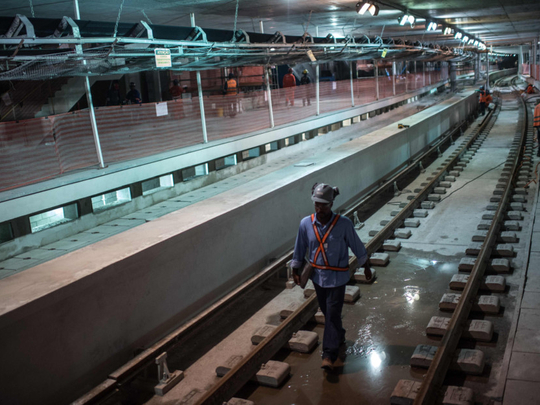
It had been open only three months and cost $12.6 million (about Dh46.27 million). And on Thursday it collapsed, sending several people tumbling over the edge and into the sea far below. Two died.
For many in Rio de Janeiro, the deadly accident on the cycle path — part of an “upgrade” to the Brazilian city’s creaking transport infrastructure — was sadly emblematic of the build-up to the first Olympics in South America, now just 100 days away.
The four-kilometre elevated path failed to withstand a giant wave from the Atlantic and went crashing down over a sheer cliff, along with all those using it. Another person who disappeared was also feared dead.
When Rio was competing to host the Olympics, the promise of a significant improvement to the city’s antiquated and nightmarishly congested transport network was a major selling point for the millions who struggle daily to and from work.
But with the clock ticking down to the August 5 opening ceremony, the bike path’s collapse brought the chaos surrounding efforts to make good on that pledge into sharp focus.
The Rio area’s approximately 12 million people have endured almost seven years of road diversions and delays, along with disruption to public transportation, as the authorities race to hit that deadline.
Officials insist it will all be worth it in the end.
The Olympics will provide a major legacy, they say, by giving 63 per cent of Rio’s population access to public transportation, compared to just 18 per cent seven years ago.
The beneficiaries will include residents of the poorest areas, in northern and western Rio, who will finally be on the BRT rapid bus system.
“There had been no investment in 60 years in those neighbourhoods,” municipal transport chief Rafael Picciani told AFP.
Olympic chiefs also tout their success keeping construction of the sporting venues on target, saying 98 per cent are ready.
Now it’s just a case of getting there to see the action.
‘We will be ready’
Few would argue that Rio badly needed to revamp its transport network — Olympics or not.
The city is blighted by seemingly eternal traffic jams, crowded trains and packed buses that have no air conditioning and often race at breakneck speeds to beat traffic lights.
Officials insist that the years of pain, not to mention the $2.7 billion outlay — and rising — will soon bear fruit, and not just for the 450,000 visitors expected to attend the Games.
Other major improvements include a new metro line, Line 4, which will whisk commuters from the tourist areas of Copacabana and Ipanema to Barra da Tijuca, the nerve centre of the Games, in 13 minutes.
Or that’s the idea, at least — just more than three months from the start of the Olympics, the line is not completed.
Officials insist it will be done in time, saying it is 93 per cent built.
“I guarantee that the Metro will be operational for the Olympics,” Rio state transport secretary Rodrigo Vieira said.
But few believe him, underlining the generally deep public scepticism of official pronouncements.
Experts say, in defence of officials, that Rio faces challenging topographical features: those towering hills may look attractive to tourists, but they are a transport designer’s nightmare. Same for the numerous small streets and alleyways.
Unperturbed, the authorities don’t want anyone using cars to get to the numerous Olympic venues dotted in and around Rio.
In an attempt to keep most people off the roads, they have also built 156 kilometres of express bus lanes and a modern tramway stretching 28 kilometres.
“There will be zero tolerance for the private car,” Picciani vowed.






